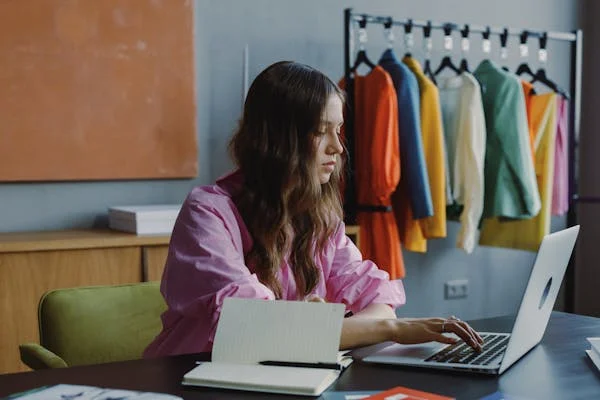H1: How to Build a Fashion-Forward and Eco-Friendly Wardrobe
In today’s world, fashion and sustainability don’t have to be mutually exclusive. Building a fashion-forward, eco-friendly wardrobe not only allows you to stay stylish but also helps reduce your environmental footprint. This guide will walk you through the essentials of creating a wardrobe that is both trendy and sustainable, proving that style and eco-consciousness can go hand in hand.
H2: Introduction
Fashion is an essential part of our identity, but the impact it has on the planet can no longer be ignored. Fast fashion has led to excessive waste, pollution, and exploitation of workers. On the flip side, eco-friendly fashion is gaining traction, offering a smarter, more sustainable approach to dressing.
Building an eco-friendly wardrobe doesn’t mean sacrificing style. In fact, it’s possible to create a wardrobe that’s both chic and environmentally conscious. This article delves into how you can build a fashion-forward wardrobe while embracing sustainable practices.
H2: Why Build an Eco-Friendly Wardrobe?
H3: Environmental Impact of Fast Fashion
Fast fashion, although inexpensive and trendy, is wreaking havoc on our planet. The industry is responsible for significant pollution, textile waste, and carbon emissions. According to reports, textile production is the second-largest industrial polluter globally, just behind oil. The water usage is staggering, with the fashion industry consuming about 79 trillion liters of water annually.
H3: The Benefits of Sustainable Fashion
Switching to sustainable fashion has multiple advantages. For one, it helps reduce environmental harm by prioritizing eco-friendly fabrics and production processes. Sustainable fashion encourages the use of recycled materials, less waste, and reduced carbon emissions. Additionally, it promotes ethical labor practices, ensuring workers are paid fair wages and working in safe conditions.
H2: Key Principles of an Eco-Friendly Wardrobe
H3: Quality Over Quantity
One of the cornerstones of a sustainable wardrobe is choosing quality over quantity. Instead of constantly buying new clothes that are cheaply made, invest in high-quality, durable pieces. These garments tend to last longer, which means less waste in the long run. Opt for well-crafted items that will stay stylish and functional for years to come.
H3: Embracing Slow Fashion
Slow fashion is a movement that opposes the fast fashion model. It emphasizes careful selection of clothes that are made to last. This includes buying fewer, but more intentional pieces that suit your personal style. Slow fashion encourages mindful purchasing and reducing the overall number of clothes you own.
H3: Choosing Natural, Organic Materials
Another fundamental principle of building an eco-friendly wardrobe is selecting clothes made from natural, organic materials. These fabrics are not only better for the environment but also for your skin. Look for cotton, linen, hemp, wool, and silk produced without harmful pesticides or chemicals. Organic materials are biodegradable and have a lower environmental footprint.
H2: How to Curate a Fashion-Forward Sustainable Wardrobe
H3: Understanding Your Personal Style
Before diving into the eco-friendly fashion world, take a moment to understand your personal style. Knowing what you truly love to wear will make it easier to build a wardrobe that suits your taste while still being sustainable. Ask yourself: Do you prefer casual, minimalist looks, or do you enjoy bold, statement pieces? Understanding your style will help guide your purchases.
H3: Investing in Timeless Pieces
A sustainable wardrobe is all about versatility. Rather than chasing fleeting trends, invest in timeless, classic pieces that never go out of style. A well-tailored blazer, a simple white shirt, or a black dress are just a few examples of pieces that can serve as the backbone of your wardrobe. These items can be worn in various ways and paired with different accessories to keep your looks fresh.
H3: Mixing and Matching for Versatility
A key to building a fashion-forward wardrobe is ensuring your pieces are versatile. You want clothing that can be mixed and matched easily, creating multiple outfits with fewer pieces. A well-curated wardrobe should allow you to pair items in various ways, reducing the need for constant shopping and helping you create a range of looks from just a few key pieces.

H4: Experimenting with Accessories
Accessories can elevate even the simplest outfits. Adding a statement necklace, a colorful scarf, or a chic bag can make a big difference. By focusing on versatile accessories, you can breathe new life into old outfits and make them feel current without buying new clothes constantly.
H2: Eco-Friendly Fabrics and Materials to Look For
H3: Organic Cotton and Hemp
Organic cotton and hemp are two of the most popular sustainable materials. Organic cotton is grown without harmful chemicals, while hemp is a fast-growing, biodegradable fabric that requires minimal water and pesticides. Both materials are durable, breathable, and comfortable.
H3: Recycled Fabrics
Recycled fabrics are an excellent choice for an eco-friendly wardrobe. Many brands now offer clothing made from recycled polyester, nylon, or wool. These materials are sourced from discarded clothing, plastic bottles, or other waste, reducing the need for virgin materials and helping to minimize waste.
H3: Bamboo and Tencel
Bamboo is a renewable resource that grows quickly without the need for pesticides. It’s used to make soft, breathable fabrics that are biodegradable. Tencel, made from sustainably harvested wood pulp, is another eco-friendly fabric known for its softness, durability, and biodegradability.
H2: Thrift Shopping and Upcycling: Sustainable Shopping Tips
H3: Thrift Stores as Fashion Goldmines
One of the best ways to build an eco-friendly wardrobe is by shopping second-hand. Thrift stores are treasure troves of unique and affordable pieces that contribute to reducing waste. You’re not only helping the environment, but you’re also finding one-of-a-kind items that can elevate your style.
H3: DIY Upcycling Projects
Upcycling old clothes is another creative way to build a sustainable wardrobe. Whether it’s transforming an old shirt into a stylish crop top or turning a worn-out pair of jeans into a fashionable pair of shorts, upcycling lets you breathe new life into old garments. It’s a fun way to get hands-on with fashion while being eco-conscious.
H2: Ethical Brands to Consider
H3: Best Sustainable Fashion Brands
There are plenty of brands out there leading the charge for eco-friendly fashion. Some notable names include Patagonia, Reformation, and Stella McCartney. These brands prioritize sustainability in their production processes, materials, and labor practices. By supporting these companies, you’re voting with your wallet and encouraging others to follow suit.
H2: The Role of Fashion Influencers in Promoting Sustainability
Fashion influencers are increasingly using their platforms to promote eco-friendly fashion choices. By showcasing sustainable brands, thrifted outfits, and DIY projects, they are helping normalize eco-conscious fashion. Their influence plays a critical role in shifting consumer habits toward more sustainable practices.
H2: Conclusion
Building a fashion-forward and eco-friendly wardrobe is about making thoughtful choices that align with your personal style and environmental values. By focusing on quality, embracing sustainable fabrics, and supporting ethical brands, you can curate a wardrobe that reflects both your fashion sense and your commitment to the planet.
Remember, the shift toward sustainable fashion doesn’t happen overnight. Start small, make intentional choices, and over time, you’ll be able to create a wardrobe that’s not only stylish but also eco-friendly.
H2: Frequently Asked Questions (FAQs)
- What are some eco-friendly fabrics to look for?
- Organic cotton, hemp, Tencel, and recycled fabrics are all great eco-friendly options.
- How can I make my current wardrobe more sustainable?
- Focus on quality over quantity, upcycle old clothes, and choose natural materials. You can also shop at thrift stores or support sustainable brands.
- Are sustainable fashion brands more expensive?
- Sustainable fashion can be pricier due to the use of higher-quality materials and ethical production methods, but the investment is worthwhile in the long run.
- How can I ensure my clothes are ethically produced?
- Look for brands that are transparent about their production processes and those that offer certifications like Fair Trade or GOTS (Global Organic Textile Standard).
- Can I still follow trends and be eco-friendly?
- Absolutely! Focus on buying timeless pieces and experimenting with accessories to keep your wardrobe fresh while maintaining sustainability.

